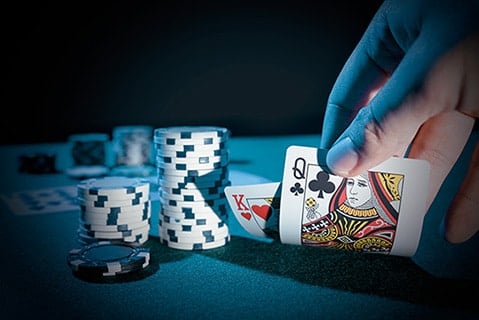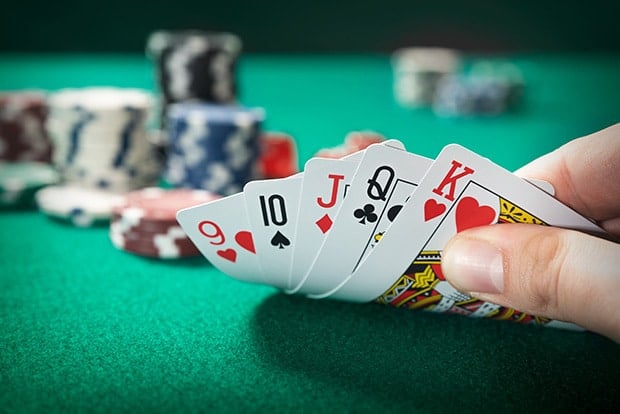Texas Hold’em is by far the world’s most popular poker variant. A faster pace, emphasis on aggression, and low barrier to entry are just a few of the myriad of reasons people love the game. Its simplicity is also why it’s the game of choice for tournament broadcasts and depictions of poker in movies like Rounders (1998) and Casino Royale (2006).
Still, you shouldn’t be discouraged by Hold’em’s dominance if you don’t like it. The beauty of poker comes from the countless ways you can play it. Different variations appeal to different people; some may like the draw-focused games of Omaha, others might like keeping track of their opponents in stud poker, and some might just want the chaotic, fun games of Pineapple Poker.
Today, we’ll give you a brief overview of a few exotic poker variants you can try as alternatives to Texas Hold’em.
Short Deck
Starting off, we have Short Deck poker, the most similar variant to Hold’em on this list. Invented by businessman and poker lovers Paul Phua and Richard Yong, Short Deck has rapidly grown in popularity, especially in Asia, where it was invented. There, it’s been featured in events like the renowned Triton Poker Series. That is also why Short Deck is sometimes called “6+ Hold’em.”

Short Deck is identical to Hold’em with two significant differences. The first is in the name; it uses a trimmed, 36-card deck where every card below six has been cut, hence why it is also known as “6-plus Hold’em.” This leads to changes in hand rankings, with flushes being ranked above full houses.
The second is the forced bet format. While Hold’em employs blinds, Short Deck instead uses antes, which are forced bets everyone at the table must pay, and one blind, equal to the ante, paid by the button.
Those two changes make Short Deck a distinct alternative that still manages to capture the feel of playing Texas Hold’em. It keeps Hold’em’s signature aggression and improves it by making hand equities run closer and using antes to give you more incentive to join the pot.
Five-Card Draw
Five-Card Draw is one of the most straightforward poker variants around. More of a home game than one you’ll find at casinos, this variant only has two betting rounds. Each player is dealt five cards, then one betting round happens, a “draw” round happens, then the final betting round happens before the showdown.
In the “draw” round, players have the option to exchange any number of their hole cards for an equivalent number of new ones. They also have the option to decline the draw and stay with their hand. Once every player has either drawn or declined, the final round of betting before the showdown happens.
Being a popular home poker game, some people elect to use jokers when playing Five-Card Draw. When you do this, jokers can be used as a wild card to complete a straight, flush, straight flush, or any hand. If you’re hosting your own Five-Card Draw games, though, feel free to run wild! You can think of your own creative uses for jokers beyond just being wild cards.

Badugi
Badugi, which is believed to have originated in Korea, is another unorthodox way to play poker. The game is a triple-draw, lowball form of poker, but what does that mean?
Triple-draw means there are three “draw” rounds where players can get new cards, reminiscent of Five-Card Draw. Lowball means that traditional hand rankings are reversed; players must try to make the “worst” hand following traditional hand rankings.
Putting all that together, Badugi is a poker variant where you must make the worst four-card hand possible. A “Badugi” hand in the game is a four-card hand where none of the cards are the same rank or suit. The lowest four-card Badugi is the winning hand; if there are no four-card Badugis, a three-card Badugi can win the pot. Aces are always treated as low cards; the hand is evaluated based on the highest card. For example, a rainbow Q-4-3-A hand loses to J-9-8-A because the Jack is lower than the Queen.

Open Face Chinese Pineapple
Open Face Chinese Poker Pineapple (OFC) is a variation of the classic Pineapple Poker variant. Originating from Finland, it has since become one of the most popular variants worldwide for poker pros who love playing it in the downtime between competitions.
OFC is a faster version of Pineapple Poker, accommodating only three players max. It follows the same rules as traditional Pineapple Poker; players must make three different hands: the top, middle, and bottom. The bottom and middle hands are made up of five cards, while the top is made of three.
The unique part about OFC is that it doesn’t use bets. Instead, players play for “points,” like card games like gin rummy and hearts. Each hand is measured against the corresponding hand of the opponent; you win a point if yours is stronger and lose if it’s worse.
At the start, players have to make a “qualifying” hand. The rules of OFC state that the bottom hand must be better than the middle one, and the middle hand better than the top. This is entirely up to chance, and if you’re unlucky enough to break that rule, ALL your hands are considered lost, giving you minus three points in total.
The first round in OFC deals players five cards which can be distributed through any of their hands. All those cards must be face-up, hence the name. After this first round, players only receive one card per turn and must play that one face-up wherever they choose. Playing a card is final; its position can’t be changed later on.
Unlike Hold’em and other variants where there’s generally only one winner, OFC measures each player against each other. So, a hand can be the overall winner in a three-person OFC game, but the middle player can still earn points by beating the lowest one.
OFC also has numerous scoring bonuses. The most common one is the “scoop” bonus, where if you manage to beat all three of someone’s hands, you get three extra points for a total of six.
Strong individual hands also get bonus points, depending on which one they are. Bottom hands, the lowest, can receive anywhere from +2 for a straight to +25 for a royal flush. Middle hands receive +2 for a three-of-a-kind all the way to +50 for a royal flush. Finally, the top hand gives +1 for a pair of sixes, going all the way to +22 for three-of-a-kind with aces.

